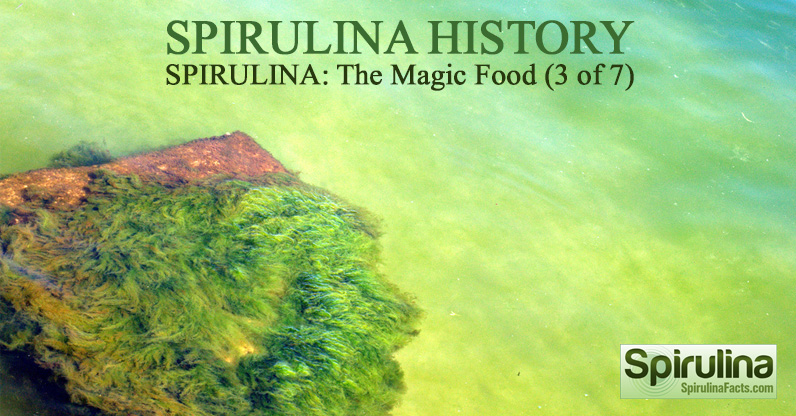Spirulina history
SPIRULINA: The Magic Food (3 of 7)
Genene Tefera, DVM, PhD
Microbial Genetic Resources Department, Institute of Biodiversity Conservation
Addis Ababa, Ethiopia, January, 2009

HISTORY OF SPIRULINA
Spirulina is thought to have been a food source for the Aztecs in 16th century Mexico, as it’s harvesting from Lake Texcoco and sale as cakes is described by one of Cortés’ soldiers. The Aztecs called it Tecuitlatl, which means the stone’s excrement.
Spirulina was found in abundance at the lake by French researchers trait within the 1960s, but there is no reference to its use there as a daily food source after the 16th century. The first large-scale Spirulina production plant was established in the early 1970s and drew attention worldwide.
Spirulina is also understood to have an even longer history in Chad, as far back as the 9th century Kanem Empire. It is still in daily use today, dried into cakes called “Dihe” or “Die” which are new to make broths for meals, and in addition sold in markets. The Spirulina is harvested from small lakes and ponds around Lake Chad.
Today Spirulina is consumed by millions of people all over the world and they are discovering lots of health benefits apart from its nutritive value.

